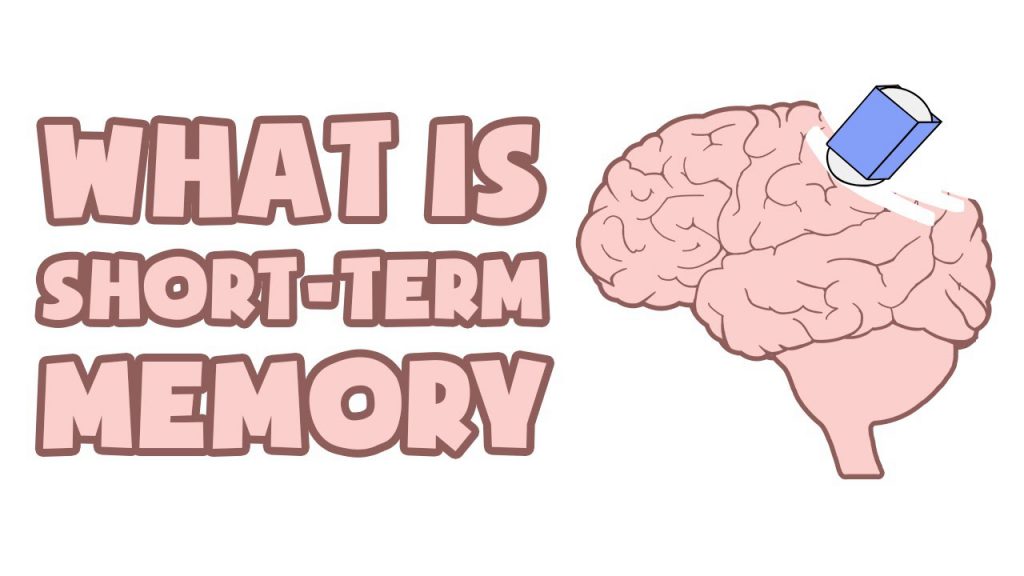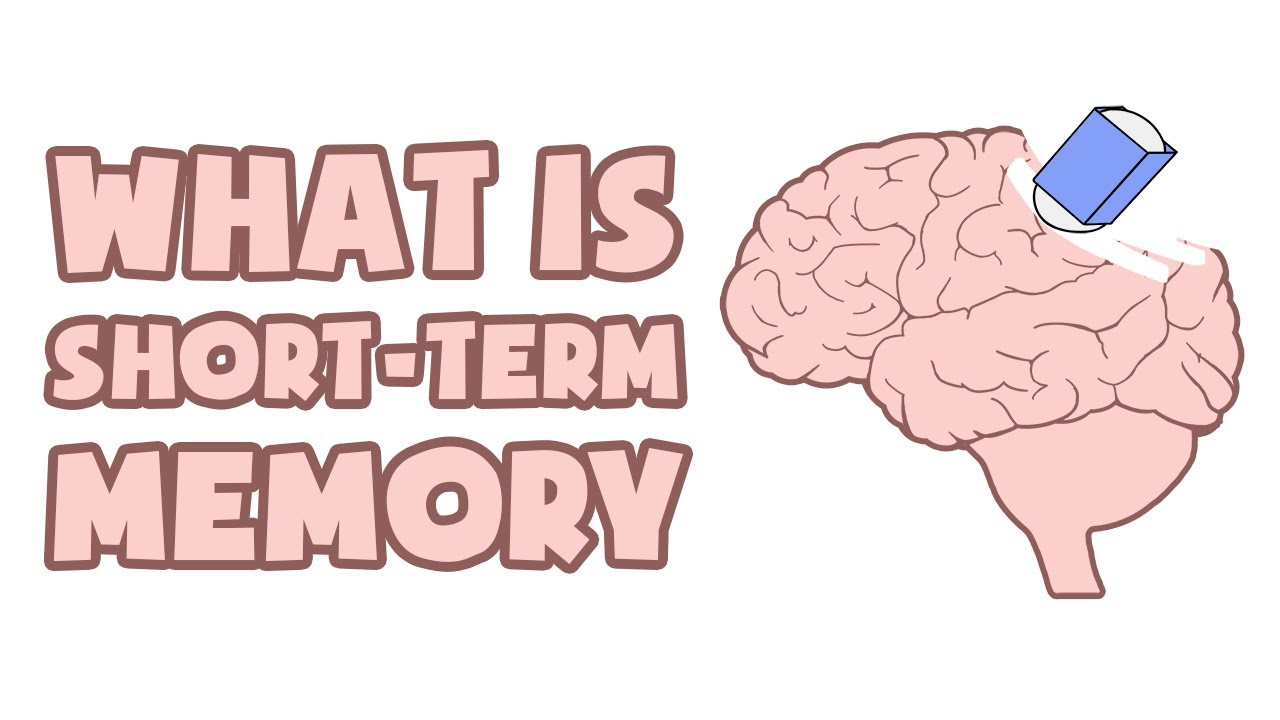
Known also as primary or active memory, short-term memory is the ability to store a small amount of information in the mind and make it readily available for a short period of time.
Short-term memory is essential for daily functions, so experiencing short-term memory loss can be frustrating and even debilitating.
- Short-term memory is very brief. It lasts for mere seconds when not practiced or actively maintained.
- Short-term memory is limited. It is common to say that short-term memory can hold seven items at a time plus or minus two.
Duration
Most of the information stored in short-term memory will last approximately 20 to 30 seconds, or even less. While some information can remain in short-term memory for up to a minute, most information spontaneously decays quite fast without rehearsal strategies like saying it aloud or mentally repeating it.
It is also important to remember that short-term memory is highly susceptible to interference. New information will rapidly displace old information if it enters short-term memory. Similar items in the environment can also interfere with short-term memory.
It is easier to forget someone’s name if you are in a crowded, noisy room, or if you were thinking of what to say rather than paying attention to their name.
Even though many short-term memories are quickly forgotten, paying attention to them allows them to continue their journey into long-term memory.
Capacity
In short-term memory, information can be stored in varying amounts.
In 1956, in an influential paper titled “The Magical Number Seven, Plus or Minus Two,” George Miller suggested that people can hold between five and nine pieces of information in short-term memory.
According to recent research, people are capable of retaining approximately four chunks of information in their short-term memory.
As an example, suppose you are trying to remember a phone number. A person rattles off a 10-digit phone number, and you make a mental note. Moments later, you realize that you have forgotten it. The information is lost from short-term memory quickly if it isn’t rehearsed or repeated until it is committed to memory.
Short-Term vs. Working Memory
According to some researchers, working and short-term memory overlap significantly and may even be the same thing. Working memory refers to the ability to use, manipulate, and apply memory for a period of time (for example, recollecting instructions when completing a task), whereas short-term memory refers only to the capacity to store information temporarily.
Working memory and short-term memory overlap significantly, and may even be the same thing, according to some researchers. Working memory refers to the ability to use, manipulate, and apply memory for a period of time (for example, recollecting instructions when completing a task), whereas short-term memory refers only to the capacity to store information temporarily.
According to the Baddeley-Hitch model of working memory, there are two parts to working memory: the visuospatial scratchpad stores visual and spatial information, while the phonological loop records auditory information. Additionally, the model suggests that there exists a “central executive” that oversees both components, processes information, directs attention, sets goals, and makes decisions.
How Short-Term Memory Becomes Long-Term Memory
It is common for memory researchers to conceptualize human memory using what is known as the three-store model. Based on each store’s storage capacity and duration, this model suggests that memory consists of three basic stores: sensory, short-term, and long-term.
In contrast to long-term memory, which is seemingly unlimited and lasts for years, short-term memory is relatively short and limited. Both short-term memory capacity and duration are limited. For a memory to be retained, it has to be transferred from short-term memory into long-term memory. The exact mechanisms for this are unclear and controversial.
According to the classic Atkinson-Shiffrin model or multi-modal model, short-term memories are automatically stored in long-term memory after a certain amount of time.
Some researchers have proposed that some mental editing occurs, and that only certain memories are selected for long-term recall. Factors such as time and interference can affect the way information is encoded in memory.
Human memory functions much like a computer based on the information-processing view of memory. As with information stored on a computer hard drive, information first enters short-term memory (a temporary storage place for recent events) and some of it is transferred to long-term memory (a relatively permanent storage place).
In contrast, some researchers question the existence of separate long-term and short-term memory stores.
Maintenance Rehearsal
For example, if you study material for an exam, you might use maintenance rehearsal (or rehearsal) to help your memories move from short-term to long-term memory. You might go over your notes repeatedly until the critical information is ingrained in your memory, rather than just reviewing them once or twice.
Chunking
Memorization techniques such as Chunking facilitate the transfer of information into long-term memory by organizing information into easier-to-learn groups, phrases, words, or numbers.
If, for example, the number 65,495,328,463 is chunked into 6549 532 8463, it will be easier to remember.
Mnemonics
Short-term memory can be moved into long-term storage through mnemonic phrases, abbreviations, or rhymes. Few examples:
- ROY G BIV: An acronym that represents the first letter of each color of the rainbow—red, orange, yellow, green, blue, indigo, violet
- I before E, except after C: A rhyme used to remember the spelling of common words
- Thirty days hath September…: A poem used to remember how many days are in each month
A mnemonic strategy that dates back as far as 500 BCE is the method of loci. In loci, you mentally place items around a room, such as on the sofa, next to a plant, or on the window seat, so you can recall them later. As you visualize yourself visiting each location, you trigger your memory, triggering your recall.
Memory Consolidation
In the brain, memory consolidation occurs when short-term memories are converted into long-term ones. Rehearsing or recalling information over and over strengthens neural networks in the brain. The repeated firing of two neurons increases the likelihood that they will repeat that firing again in the future.
Short-Term Memory Loss
Occasionally, most of us experience episodes of memory loss. We may miss a payment, forget the date, lose our keys, or have trouble finding the right words.
A constant feeling of forgetfulness can be frustrating, embarrassing, and even frightening. Short-term memory loss may even make you worry that your brain is relying too much on devices such as your smartphone rather than your memory.
Mild memory loss, however, isn’t always indicative of a problem, and certain memory changes are normal with age.
Other, non-permanent factors, including:9, can also cause short-term memory loss
- Alcohol or drug use
- Anxiety
- Depression
- Grief
- Fatigue
- Medication side effects
- Sleep deprivation
- Stress
If you have concerns about memory lapses, your healthcare provider can assess your symptoms and recommend lifestyle changes, strategies, or treatments to improve your short-term memory.

